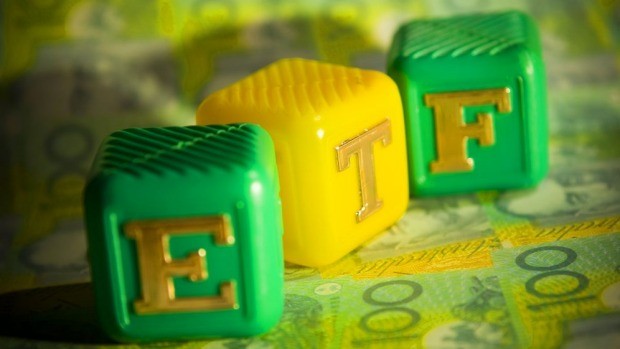Exchangetraded funds Too much of a good thing
Post on: 19 Июль, 2015 No Comment

ANY industry would be proud of an average annual growth rate of 34% over ten years and of a global reach from Austria to Taiwan. But the headlong expansion of exchange-traded funds (ETFs), which by May this year controlled almost $1.5 trillion of assets (not far short of the $2 trillion in hedge funds), has become a matter for concern among financial regulators. Could ETFs be the next source of financial scandal, or even of systemic risk?
ETFs have been around since 1990, when the first fund was launched in Canada. The original idea was to create portfolios of shares replicating a stockmarket index, such as the S&P 500. Index-tracking funds had been available to institutional investors since the 1970s. Companies such as Vanguard offered them to individuals in the form of mutual funds. However, as the name suggests, the key feature of an ETF was that it was itself listed on a stockmarket, so that investors could buy and sell it easily. Unlike units in a conventional mutual fund, ETFs can be traded all day long.
Most people still regard these plain-vanilla ETFs as a benign invention that allows small investors to own a diversified portfolio at a low cost. State Streets $88 billion SPDR fund, which mimics the S&P 500, has a total expense ratio of just 0.09%.
But fund managers quickly elaborated on the basic design. The number of ETFs has swelled to 2,747 (see chart 1). Within equities, there are ETFs based on small-cap companies, value shares, individual industries and every conceivable combination of countries and regions. In bonds, there are ETFs linked to government, corporate and high-yield debt and paper of varying maturities. Some ETFs are based on commodity indices and property markets, others are designed to appeal to the environmentally conscious or to devout Muslims. There are leveraged ETFs which offer a geared return on a given index, inverse ETFs which aim to go down when a benchmark goes up (and vice versa) and, inevitably, leveraged inverse ETFs.
For some, this is a worrying trend, with echoes of the subprime housing crisis, in which financial innovation went out of control. That crisis, too, had its origins in invention with a benign aim: the packaging of mortgages for use as securities for bonds was intended to reduce borrowing costs and disperse risk. Eventually, however, that simple idea transmuted into complex collateralised debt obligations and lower lending standards.
Exotic traded funds
Similarly, the new types of ETF no longer offer the cheapness and diversification of the early varieties. Instead they have become a means for hedge funds to speculate on the market throughout the trading day, allowing them to make complex bets on illiquid asset classes. And the portfolios of some ETFs consist not of a broad range of stocks but of a derivative position with an investment bank as a counterparty.
Official concern is growing. In April three international bodies set out their worries. The Financial Stability Board (FSB), a committee of financial supervisors, issued a report on ETFs. The IMF devoted part of its global financial-stability report to them. And the Bank for International Settlements (BIS) published a paper entitled “Market Structures and Systemic Risks of Exchange-Traded Funds”.
One risk is a lack of liquidity. On May 6th 2010 trading in the American stockmarket seemed to go haywire: the Dow Jones Industrial Average fell by almost 1,000 points in the session and some stocks lost almost all their value. This “flash crash” prompted the authorities to cancel a bunch of trades made at unusual prices. Between 60% and 70% of those trades were in ETFs, far above their actual weighting in the market.
Some investors use ETFs as a quick way of expressing their overall view on the market, while high-frequency traders use the funds as part of their complex arbitrage strategies. But such strategies work only as long as there is someone willing to take the other side of the trade. In chaotic conditions, there may be sellers but no buyers. As the IMF points out, “While most ETFs are supported by one or two marketmakers, there is no guarantee of active trading under illiquid conditions.”
A linked problem is the tendency for ETFs to be the main way in which investors seek exposure to some asset classes, notably gold. Once upon a time gold bulls had to pay a hefty markup to buy coins or had to purchase shares in gold-mining companies and hope that the management was competent. But gold ETFs have been hugely popular, seeing inflows of $12 billion in 2009 and $9 billion in 2010. The largest gold ETF holds more bullion than all the worlds central banks except those of America, France, Germany and Italy. The IMF also has more. The surge of interest in gold ETFs has been encouraged by (and may have in turn contributed to) a rise in the bullion price. If investors lose faith, the market may become disorderly as they scramble to take their profits.
Some ETF managers also top up their income with fees for lending the securities in their portfolios. There is a risk that, in a period of market disruption when ETF investors want their money back, managers would be forced to recall such loans, adding to liquidity pressures.
Another problem lies in the existence of leveraged ETFs, where losses as well as profits can be magnified. Were a leveraged ETF to suffer huge losses, the reputation of the entire industry might be affected, particularly among private investors. Inverse ETFs offer a way for investors to bet on a fall in an asset class but they may not always deliver such a return over an extended period. “It isnt hard to give examples in which investors would lose money on a leveraged long ETF if the market went up over a period of significant volatility, or in which they lost money owning a short ETF and the market went down over a period in which there were some sharp rallies,” says Terry Smith, chief executive of Tullett Prebon, a money broker.
Perhaps the biggest concern, and the one with the clearest echoes of the subprime crisis, surrounds “synthetic” ETFs and linked products known as exchange-traded notes (ETNs) and exchange-traded vehicles (ETVs). An ETN is a debt security issued by an index provider or a bank and traded on the market; an ETV is similar, but the debt issuer is a special-purpose vehicle. Collectively these offshoots are known as exchange-traded products (ETPs).
The rationale for concocting this alphabet soup is the desire to create funds linked to illiquid asset classes. It may be too costly or impractical to replicate the targeted index completely. To synthesise it, the ETF provider usually enters into a transaction known as a total return swap with a bank. The bank agrees to pay the provider an amount equal to the return on the chosen benchmark, say an emerging-markets index; the provider hands over cash in return. The bank now has to manage the risk of replicating the index; the provider faces the risk that the bank might go bust. So the ETF provider requires the bank to provide collateral (see diagram).
The financial laboratory revisited
Heres the rub. The collateral is usually unconnected with the index. The BIS cites the example of an emerging-markets ETF offered by a firm called db x-trackers. The collateral was in the form of equities and bonds. Most of it had nothing to do with emerging markets. Around half of the equity portion was in Japanese shares; another 30% consisted of American and German ones. Of the bonds, three-quarters were American, many of them unrated. Were the bank counterparty to fail, the index provider would be left with assets that were unrelated to the target portfolio.

Worse, the BIS points to a potential conflict of interest when the fund provider is owned by an investment bank. When a bank acts as a marketmaker, it needs to keep an inventory of bonds and stocks so that it can deal with clients demands to buy and sell. These positions have to be funded, which can be costly, especially if the securities are illiquid. “By transferring these stocks and bonds as collateral assets to the ETF provider sponsored by the parent bank, the investment banking activities may benefit from reduced warehousing costs for these assets,” the BIS warns.
That raises the danger that an ETF could act as a dumping ground for the unwanted securities on an investment banks books. “The synthetic ETF creation process may be driven by the possibility for the bank to raise funding against an illiquid portfolio that cannot otherwise be financed,” says the FSB report. Again, there are parallels with the subprime crisis, where mortgage-backed securities were warehoused in off-balance-sheet ventures.
If doubts emerged about the health of the bank involved in the swap, investors might be inclined to sell their holdings in the ETF or the ETN rather than take their chances on the exact value of the collateral. After all, as the crisis of 2008 showed, when banks are collapsing the value of all kinds of assets takes a battering.
The structure of synthetic ETFs is not a secret. Anyone who reads the documentation carefully should be aware of the nature of a fund and the type of collateral. It is also worth noting that in America these concerns apply only to ETNs and ETVs. In products labelled as ETFs, at least 80% of the portfolio must comprise securities matching the funds name. ETVs are typically characterised by investments in underlying raw materials or futures, collateralised with Treasury bills.
In Europe synthetic funds make up around half of the ETF sector by assets. However, the European Fund and Asset Management Association, a trade body, points out that the vast majority of them trade under the UCITS (Undertakings for Collective Investments in Transferable Securities) rules, which limit some of the risks outlined by the BIS and the FSB. For example, rules on conflicts of interest restrict the choice of counterparties, a fund cannot have an exposure to any one counterparty that comprises more than 10% of its value, and the chosen collateral is subject to liquidity and credit-quality criteria.
Despite some eerie parallels, it is hard to conclude that ETFs yet pose a systemic risk on the same scale as mortgage-backed securities. Leveraged funds have around $40 billion of assets, less than 3% of the industry total, according to BlackRock, a fund-management group that, under its iShares brand, is the biggest provider of ETFs. Synthetic ETFs had more than $140 billion of assets in May. Though ETPs have been growing rapidly (see chart 2), their total value is less than $200 billion, less than one-seventh of that of conventional ETFs. It seems unlikely that banks have the same kind of exposure to collapsing ETFs as they did to the subprime market.
Nevertheless, the rapid trading of ETFs is an area of concern, especially when the underlying assets are illiquid. Creating a synthetic ETF does not eliminate this illiquidity risk, but merely transforms it into a bet on the creditworthiness of a bank. One day that bet will go wrong.
Even some in the industry are nervous about the profusion of new vehicles. A failure might diminish the appeal of ETFs as a whole. “There are products that are not even funds which are being called ETFs,” reports Deborah Fuhr of BlackRock. “The risk of confusion, disappointment and disillusionment among investors would be very negative for the ETF industry.”
That would be a shame. Fund managers fees have always eaten into investors returns; ETFs were a splendid way of letting investors keep more of their money. But like a hyperactive child, the finance sector can never leave a good thing be.
Note: A sentence clarifying the nature of ETVs has been added to the online version of this article.














